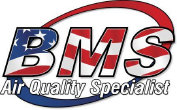
Air Conditioning & Heating
3 Steps to Improving Your Indoor Air Quality
Step 1
Control sources of indoor pollutants -- such as cleaning products, emissions
from furnaces and propane heaters or stoves, paint strippers, and glue -- to reduce toxins and irritants released into the air.
According to the EPA, source control is the most effective solution to indoor air pollution. Servicing and adjusting heaters
and stoves regularly reduces their emissions. Reduce or eliminate the use of cleaners and solvents indoors, unless you can ventilate
the area properly.
Step 2
Move fresh air into your home with proper ventilation. The EPA recommends using exhaust fans in
kitchens and bathrooms to draw out stale air and recirculate household air. Placing a portable fan in the window to draw out
old air helps keep air fresh and well-circulated. Install whole-house fans or air circulating units to improve air quality.
Step
3
Install air filtration systems or air cleaners to filter dust and pollutants out of the air. The effectiveness of air filtering
systems depends on the model and size of the unit; small tabletop models typically don not remove high levels of indoor air pollutants,
but larger models may be more effective. Read product information carefully to understand which pollutants a specific unit is
designed to filter. Many do a good job of removing dust and pollen but cannot remove hazardous gases, such as radon; the EPA
does not recommend relying on any air filtering system to remove radon.
Improve Your Indoor Air Quality